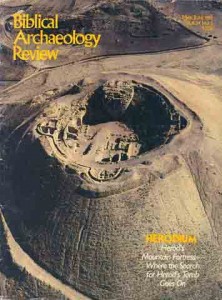Herod the Great, king of Israel from 37 to 4 B.C., transformed Judea architecturally into a Hellenistic-Roman realm that competed with the best in the empire. In this issue, BAR features three Herodian sites—Herodium, a wilderness palace-fortress where Herod was buried; Caesarea, where he built a great harbor; and a magnificent tomb-monument he built for his family in Jerusalem.

In 1963, Ehud Netzer was a young Israeli architect working at the Masada excavations under Yigael Yadin. When Virgilio Corbo, the Italian excavator of Herodium, came to visit Masada, Netzer showed him the site and then listened, fascinated, to Corbo’s descriptions of the huge mountain-palace of Herodium in the Judean wilderness where Corbo was excavating. Netzer had to wait four years to visit Herodium, until after the Six Day War, when the site became accessible to Israelis for the first time. Subsequently Netzer spent a decade, from 1972 to 1982, excavating the vast remains at Herodium and at Herod’s winter palace at Jericho, earning his Ph.D. in archaeology from Hebrew University in 1977.
Already a library member? Log in here.
Institution user? Log in with your IP address.

